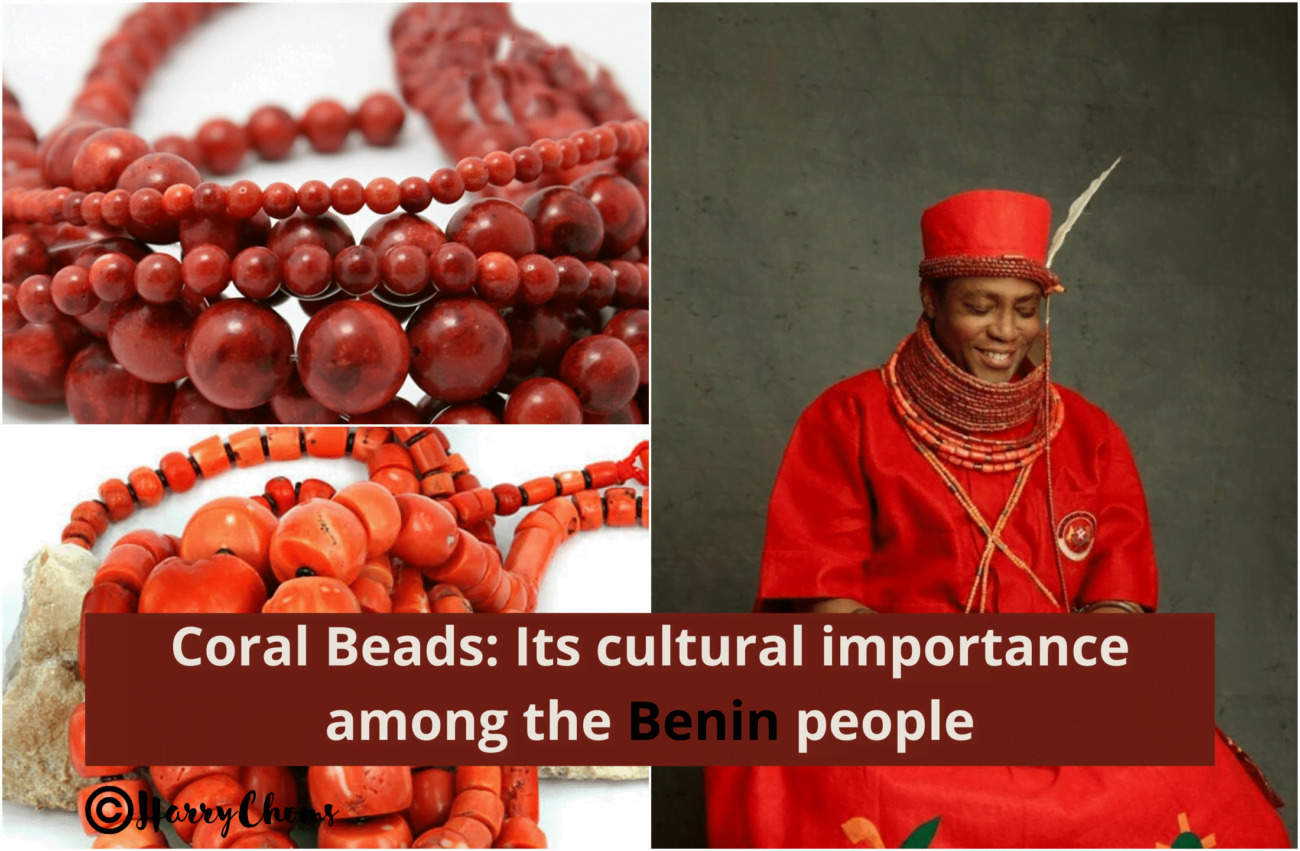The Benin people are famous for their red coral beads, which are worn by the royal family and brides at cultural festivities.
The coral beads trace back to ancient Benin and are extremely important to the tribe’s attire, lifestyle, culture, and heritage. These coral beads represent power, dominance, and hierarchies.
Let us first analyze what coral beads are made of and why they are so important to the Benin people before delving into their cultural importance.
Corals occur in a variety of forms, shapes, and colors; yet, their naturalism and stylization distinguish each coral. These corals are made up of natural organic sediments, which are the remains of living and non-living organisms that have solidified through time to produce sedimentary rocks.
The most commonly used corals in jewelry are red, pink, orange, and black corals.
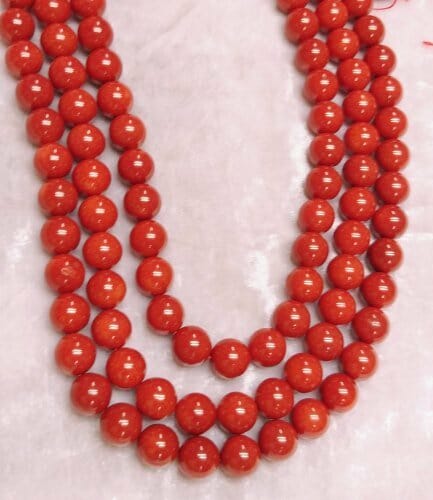
Coral beads are created from the carbonate secretions that build the structure on which the coral ‘polyps’ survive, rather than the living organism itself. Corals are gathered and cut and polished into cabochons, which are subsequently carved into beads.
The corals of the Benin people, Ivie Ebo and Ekan, are derived from Phylum Coelenterata (Cnidaria), a distinctive red coral that grows in bush-like forms in the Mediterranean and East Seas.
The Ivie, known for its brilliant red color, is also thought to have spiritual characteristics that provide protection.
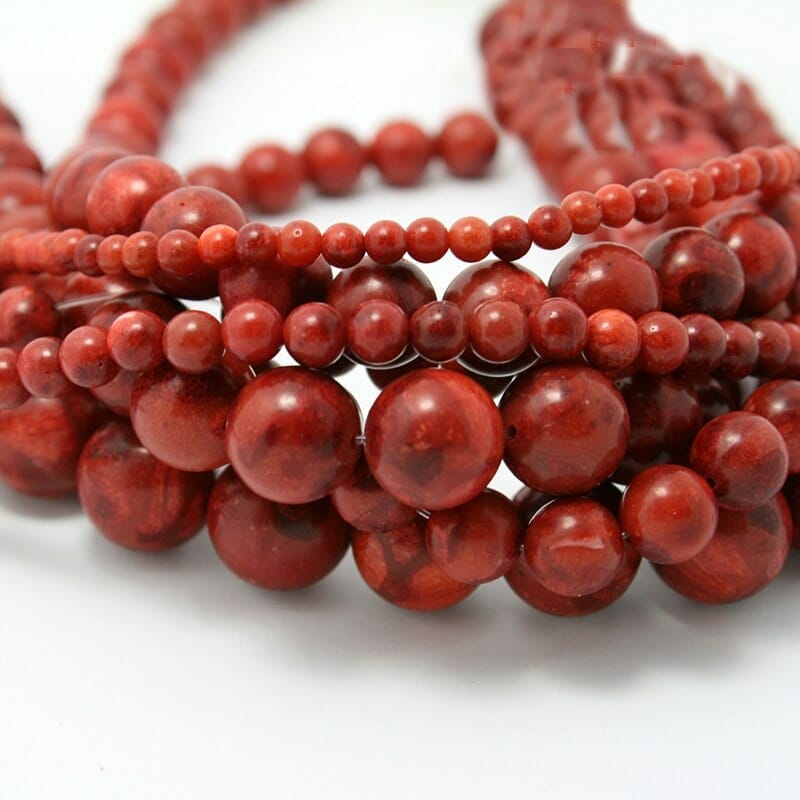
Coral beads: Tracing its origins
The origins of red coral beads can be traced back to the 1400s A.D., according to oral legends. According to the tale recounted by Oba Ewuaee, the beads were supposedly taken from the ‘goddess of the sea’ at Ughoton (Gwatto) and smuggled into the Republic of Benin.
However, another legend claims that in the 16th century, the Portuguese brought coral beads into Benin city through trade.
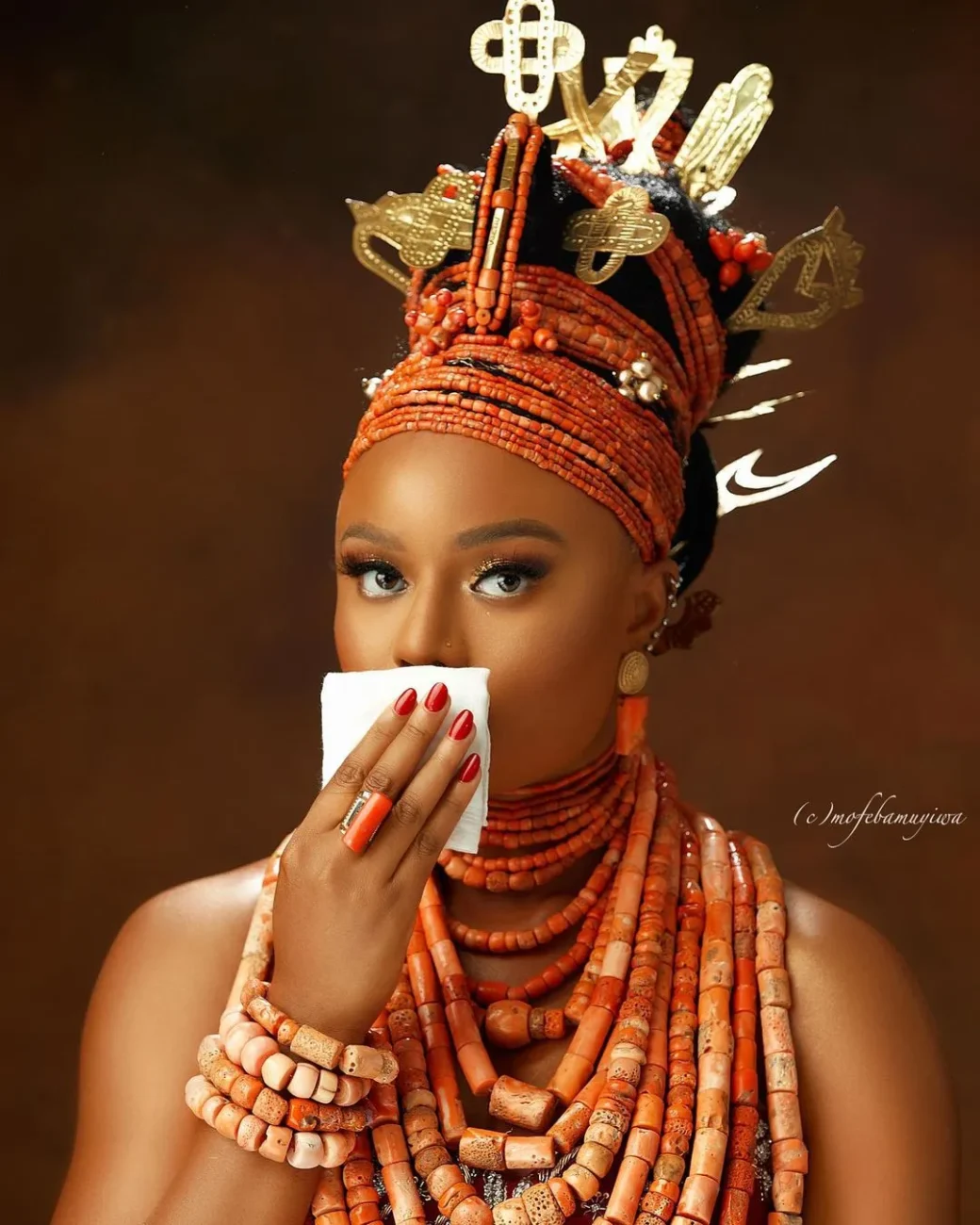
The cultural significance of coral beads in Benin
Whatever the case may be, these coral beads have cemented their position in Benin culture.
Ivie is the most prominent type of coral bead in Benin culture, and it is only worn by Benin Obas and Chiefs. This valuable coral can be polished to reveal its stunning red rose or pink color.
Ekan, on the other hand, is greyish and resembles stone.
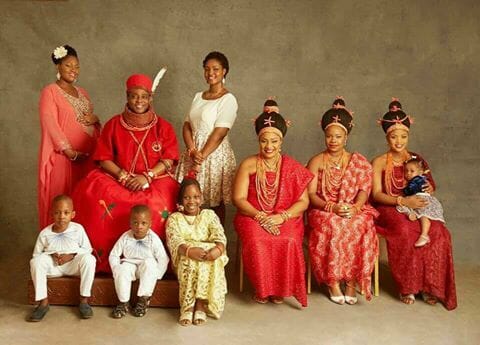
While the Oba of Benin regulates the use of Ivie beads, some shapes and patterns are restricted to members of the ruling group and are not worn by other tribe members.
The weight of corals in royal regalia is significant, as it denotes supremacy. Furthermore, some valuable jewelry, regalia, and accessories are only worn for important rituals and festivals and cannot be worn for casual public appearances.
Obas are decked in coral regalia, comprising a beaded crown, necklaces, bangles, and shoes, as a symbol of authority and majesty.
The Benin chiefs, on the other hand, wear their coral regalia only around their necks and wrists, whilst the Oba’s ladies wear these beads around their necks, wrists, and ankles.
When the Oba sends beads to a person, that person is being made a chief, and denying the palace’s beads is considered as an unpardonable act, causing one to be some ‘Oghian Oba’ (the Oba’s enemy).
The Ivie can also represent punishment when Chiefs are forbidden from wearing it due to treason.
The Oba’s gift of a bead to a single woman represents a marriage proposal that she is obligated to accept. During the wedding, she wears Okuju, a beaded crown that she either sews into her hair or wears as a wig.
Wearing coral beads is limited to major social and ritual occasions like as weddings, coronations, and funerals, and is worn by both men and women.
Benin ladies wear the beads as a sign of feminine beauty on the waist to emphasize their tiny waist and curved hips.
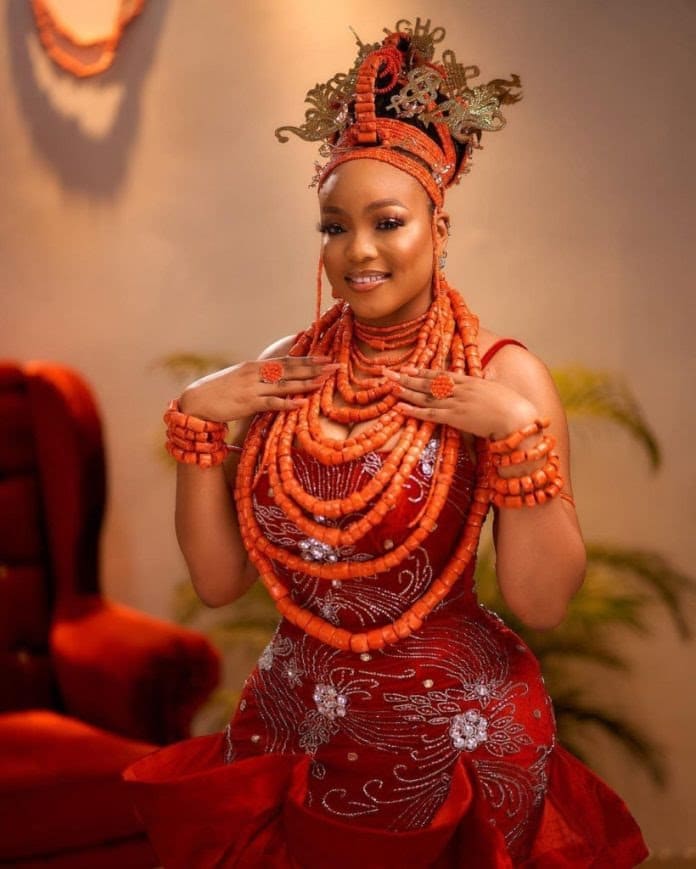
Ugie Ivie Festival
Every year, the Benin people celebrate the Ugie Ivie bead festival. This cultural and religious event is regarded as a physical attempt to contact the spirit realm.
Wearing beads within the Benin Kingdom is prohibited during the week-long festival until after the ceremony.

